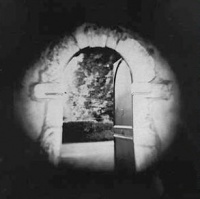Hole
From The Art and Popular Culture Encyclopedia
(Difference between revisions)
| Revision as of 09:55, 8 March 2014 Jahsonic (Talk | contribs) ← Previous diff |
Revision as of 09:56, 8 March 2014 Jahsonic (Talk | contribs) Next diff → |
||
| Line 1: | Line 1: | ||
| [[Image:Nicéphore.jpg|thumb|200px|''[[Untitled]]'' by [[Nicéphore Niépce]]'s ]] | [[Image:Nicéphore.jpg|thumb|200px|''[[Untitled]]'' by [[Nicéphore Niépce]]'s ]] | ||
| [[Image:Eruption of Vesuvius (Turner).jpg|thumb|left|200px|''[[Eruption of Mount Vesuvius in AD 79|Eruption of Vesuvius]]'' ([[1817]]) by [[William Turner]], an eruption of [[Vesuvius]]]] | [[Image:Eruption of Vesuvius (Turner).jpg|thumb|left|200px|''[[Eruption of Mount Vesuvius in AD 79|Eruption of Vesuvius]]'' ([[1817]]) by [[William Turner]], an eruption of [[Vesuvius]]]] | ||
| + | [[Image:The Big Swallow.jpg|thumb|right|200px|Extreme [[close-up]] from the movie "[[The Big Swallow]]" ([[1901]]), produced and directed by [[James Williamson]] (1855-1933)]] | ||
| {{Template}} | {{Template}} | ||
Revision as of 09:56, 8 March 2014

Extreme close-up from the movie "The Big Swallow" (1901), produced and directed by James Williamson (1855-1933)
|
Related e |
|
Featured: |
A hole is an opening.
Etymology
Middle English, from Old English hol orifice, hollow place', from Proto-Germanic *hulą (compare Middle Dutch hool, German Höhle, Old Norse holr, Walloon hol), noun form of Proto-Germanic *hulaz 'hollow'. More at hollow.
Namesakes
- Black Hole by Charles Burns
- Tokyo Lucky Hole by Araki
See also
- Plot hole, in writing
- Black hole
- Bunghole
- Bullet hole
- Manhole, an opening in the ground to access the sewer under a city
- Peephole
- Portable hole, a fictional device
- Porthole, a window on a ship's external hull
- Sound hole, on a musical instrument
- Wormhole
- Whole
- Negative space
- Trepanation
Unless indicated otherwise, the text in this article is either based on Wikipedia article "Hole" or another language Wikipedia page thereof used under the terms of the GNU Free Documentation License; or on research by Jahsonic and friends. See Art and Popular Culture's copyright notice.

.jpg)

